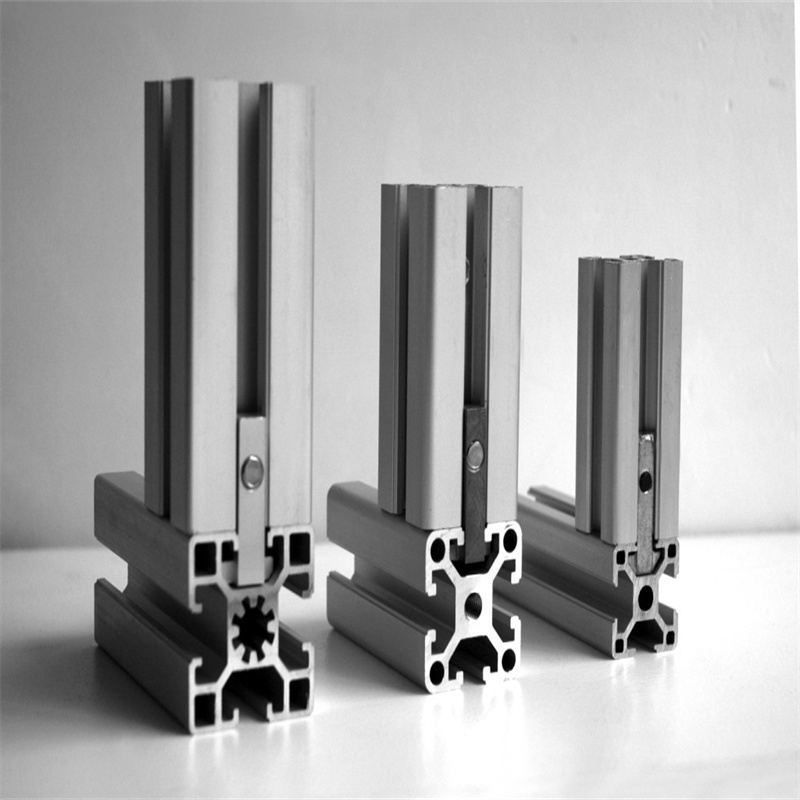As technology continues to advance, aluminum alloys have become an indispensable material in various fields such as construction, automotive, aerospace, and more. In many applications, surface treatment of profiled aluminum alloys is crucial, as it can enhance the alloy’s appearance, corrosion resistance, and mechanical properties. This article will focus on one significant surface treatment technique for profiled aluminum alloys: descaling, and explore its impact and applications.
Descaling refers to the removal of the oxide layer and other impurities from the surface of aluminum alloys to prepare it for subsequent treatments. This is the first step in aluminum alloy surface treatment and is a critical factor in ensuring treatment quality. Here are some common descaling methods:
- Mechanical polishing: This is one of the most common methods for removing the oxide layer from aluminum alloy surfaces. It involves using mechanical processes like grinding, polishing, and brushing to effectively eliminate oxides and impurities, resulting in a smooth and clean surface.
- Chemical descaling: Chemical methods typically involve immersing aluminum alloy components in acidic or alkaline solutions to remove oxide layers. This method requires careful handling to avoid any undesirable effects on the aluminum alloy.
- Sandblasting: Sandblasting is a method of removing oxide layers and impurities by high-speed spraying of abrasive particles. It is suitable for aluminum alloy profiles of various shapes and effectively removes oxide layers while providing a roughened surface for coating adhesion.
- Solvent cleaning: Solvent cleaning involves using organic solvents to remove organic contaminants and impurities from the surface of aluminum alloys. This method is typically used to remove grease, tar, and other organic impurities.
The choice of the descaling method depends on the specific application requirements and the type of aluminum alloy. Careful consideration of the alloy’s composition, surface condition, and desired final surface quality should precede the descaling process.
Apart from removing oxide layers and impurities, descaling has several crucial impacts:
- Surface quality: The quality of descaling directly affects the final surface quality of the aluminum alloy. Thorough descaling can result in a smooth and clean surface, enhancing the appearance of the alloy.
- Coating adhesion: The oxide layers and impurities on the surface of aluminum alloys can reduce coating adhesion. Effective descaling can improve coating adhesion, extending the lifespan of coatings.
- Corrosion resistance: Descaling can remove oxide layers, thus enhancing the corrosion resistance of aluminum alloys. This is crucial for aluminum alloy components used in harsh environments.
- Mechanical properties: Some applications require aluminum alloy components to have specific mechanical properties. The descaling process should be chosen carefully to ensure it does not adversely affect hardness, strength, and other mechanical properties of the aluminum alloy.
The applications of surface treatment for profiled aluminum alloys are wide-ranging, including construction, automotive, aerospace, electronics, and household products. In construction, profiled aluminum alloys are often used for door and window frames, curtain walls, roofing, and structural components. Effective descaling and subsequent treatments can improve the appearance, corrosion resistance, and mechanical properties of these components, extending their lifespan.
In the automotive industry, profiled aluminum alloys find extensive use in automobile bodies and chassis components. Descaling and coating treatments protect aluminum alloy components from road salt and corrosive substances, while also improving fuel efficiency.
In the aerospace field, profiled aluminum alloys are employed in aircraft structures, engine components, and spacecraft. Descaling is a crucial step in ensuring the reliable operation of spacecraft under extreme conditions while maintaining the integrity and performance of critical components.
In conclusion, descaling in the surface treatment of profiled aluminum alloys is a critical step that directly impacts the alloy’s final performance and applications. By selecting the appropriate descaling method, you can enhance surface quality, coating adhesion, corrosion resistance, and mechanical properties to meet various application requirements, from construction to automotive manufacturing and aerospace. Further research and development of these techniques will continue to drive the widespread use of aluminum alloy materials in various industries.
Post time: Nov-16-2023


